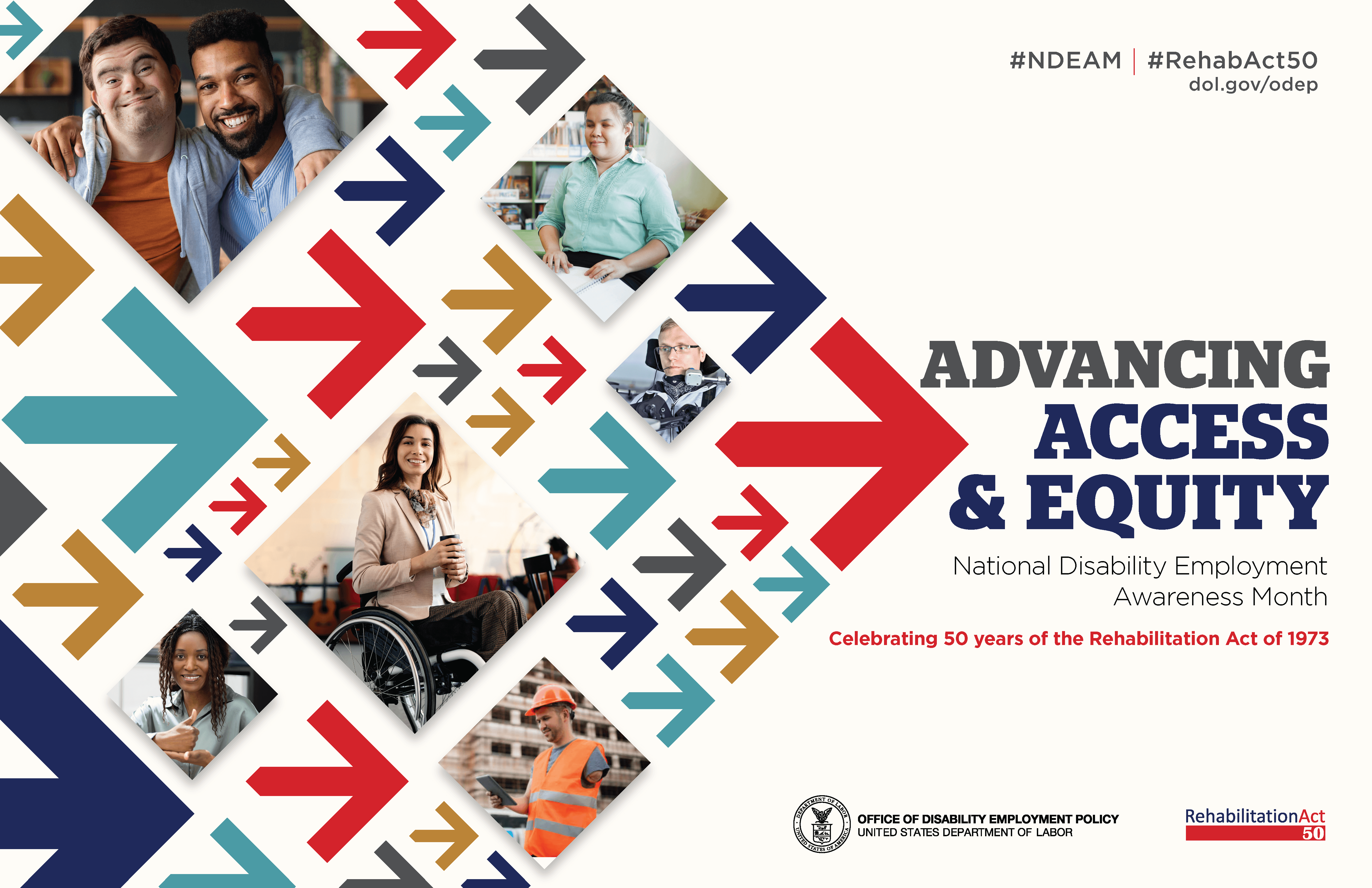
October is National Disability Employment Awareness Month, which gives us the opportunity to recognize and celebrate the value that people with disabilities add to America’s workplaces and our economy. Disabled workers are an essential component of a diverse and strong workforce. In fact, companies identified as leaders in disability inclusion had, on average, over a four-year period, 28% higher revenue, double the net income and 30% higher economic profit margins than their counterparts.
According to the Centers for Disease Control and Prevention (CDC), one in four U.S. adults has a disability that impacts major life activities. That’s nearly 61 million Americans. Disabilities come in many forms and can impact people’s mobility, cognition, hearing, vision, independence and self-care. While some disabilities are visible, many cannot be detected simply by looking at or speaking to someone.
The U.S. Department of Labor reports that only 41.2% of the disabled American population aged 16-64 contributed to the U.S. workforce in August 2023. But this isn’t necessarily because employers consciously avoid hiring people with disabilities. Disabled employees may be left out of the hiring process simply because of the way the process is structured or due to a lack of proper training. Fortunately, maximizing disabled employees’ access to workplaces is relatively easy to ensure by following simple steps.
Rethink the hiring process
If disabled employees are underrepresented in a company’s workforce, one option is to examine the pool of applicants from which the company draws new hires. There are many community groups that can make disabled candidates aware of any job opportunities available. In addition, companies can restructure their job applications to omit questions about personal details and interviewing processes to include audio phone calls only (with no in-person or video calls) to help alleviate the effects of unconscious bias from their hiring decisions.
Offer the Appropriate Resources
To help bridge any gaps, disabled employees may benefit by having access to specific skill training courses. For example, soft skills training about reading and interpreting body language or responding appropriately to criticism may be particularly valuable to employees with autism. Additionally, training for nondisabled staff can help them understand the barriers faced by disabled employees to help get them on board and eliminate barriers to inclusion.
Get Leadership Buy-In
Change within any organization almost always starts from the top down. While it’s a popular opinion to value inclusiveness in today’s workplace, leadership must be willing to commit the necessary time and resources toward getting the inclusion effort started and holding employees accountable to reaching the organization’s end goals. Leaders should set the example by participating in education and training and personally making any necessary adjustments to ensure an inclusive workplace.
Be Accommodating
It’s a common mistake to assume that disabled employees will incur extra expenses in accommodations. Many disabled employees require no additional hiring expense at all. But for those that do, the costs are usually under $500 and come with tax incentives to help offset the expense. It’s also helpful to see any costs such as these for what they are, which is an investment by the company toward ensuring that its workforce is as competitive as possible.
This October, we encourage Americans to recognize the contributions that disabled workers have and continue to make to our country and their ongoing struggles for equal representation in the workplace. We also urge those with the ability to make any changes necessary to give disabled job candidates a chance to make their contributions to the workforce.
For more information, visit the U.S. Department of Labor’s guide on Disability Resources.



